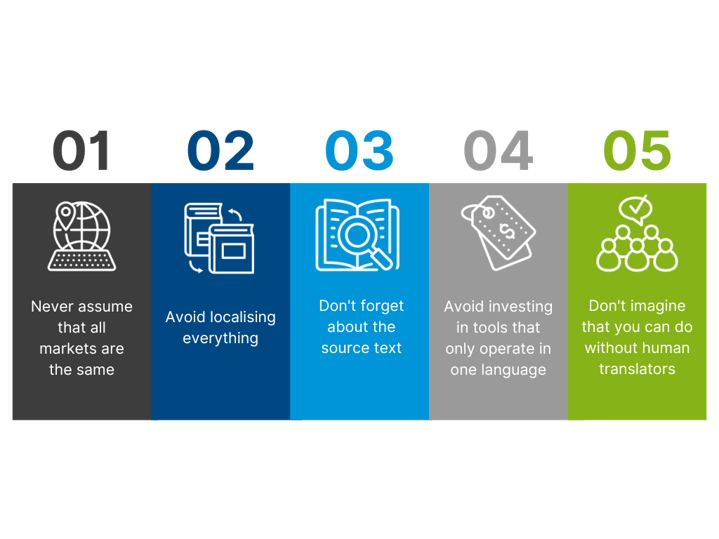Do you actually know how to get the best translation for your purpose? Because there is more to translation than just translation.
When you translate from one language to another, it is not enough to work through the text line by line. You often need to adapt certain elements of the source text to take into account cultural considerations associated with the target market.
Here at World Translation, we work with a broad network of expert freelance translators around the world; skilled professionals who know the ins and outs of the different languages and are specialists in the subject matter and type of text.
WHAT IS LOCALISATION?
Localisation is the linguistic, cultural and stylistic adaptation of a text for a specific target group in order to ensure that all the cultural requirements are met. In addition to linguistic adaptations, this may also include adaptation of units of measurement, date formatting and, where appropriate, the layout.
The purpose of localisation is for readers to feel that the content has been created in their language rather than “simply” translated from another language.
Click here to find out more about localisation.
Example of localisation:
 Localisation is often associated with written material, and may refer to the contents of websites, documents and apps. However, localisation can also be applied in other areas – for example to a given product.
Localisation is often associated with written material, and may refer to the contents of websites, documents and apps. However, localisation can also be applied in other areas – for example to a given product.An everyday example of localisation is to be found in the automotive industry. All cars come with a steering wheel (fortunately!), but depending on where in the world they are sold, the driver’s side may be on the right or the left. This is defined by the legislation and regulations in effect in the country in question.
Similarly, all cars are fitted with a speedometer, which, depending on where you are in the world, will show your speed in mph or km/h. In this case, it is the unit of measurement that has been adapted to the local market.
As such, localisation is relevant not only when we look at a text, but also in the visual impression that accompanies it. And, as demonstrated in the example, when we are to launch a product onto a new market.
HOW TO AVOID THE 5 MOST COMMON LOCALISATION ERRORS
Localisation can be a complicated process. A good deal of knowledge is required to enter a new market, so it is important to be aware of the numerous pitfalls that may exist. Find out more about the most common types of errors to avoid when localising your content:
 1. Never assume that all markets are the same
1. Never assume that all markets are the same2. Avoid localising everything
3. Don’t forget the source text
Example: When Pepsi was to launch its new slogan – “Pepsi Brings You Back to Life” on the Chinese market, the catchy strapline was (mis)translated as “Pepsi raises your forefathers from the grave” ... Oops!
4. Avoid investing in tools that only operate in one language
5. Don’t imagine that you can do without human translators
Need help with localisation?


